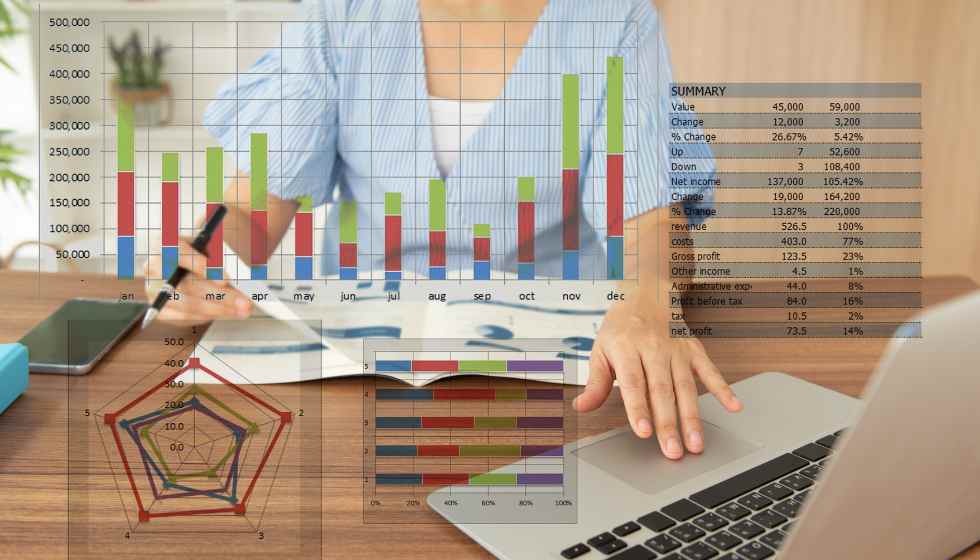Financial ratios are one of the most valuable tools to assess a company’s state of health. These are standardized financial control measures that, in a very simplified way, offer a static photograph of certain vital aspects. Below we will explain how to assess the financial situation of your company.
Main financial ratios
The main financial ratios are standardized calculations that shed light on some relevant aspects to assess the company’s current operation. They are used to assess whether the state of indebtedness is adequate, whether the existing liquidity is sufficient to meet short-term expenses or whether a sufficient profit is obtained from the sale of products and services to amortize expenses and generate profits.
These measures are used regularly to carry out internal and external audits that indicate the operation of the business and reveal possible red lights on which must take action must take action. As numerical measures offer objective and truthful information, making ratios useful tools in decision-making.
To calculate the ratios, it is necessary to use the balance sheets, the accounts and the financial statements. With the added information, it is possible, in a straightforward way, to calculate the percentages in which the company is in the current situation and to take measures later. Some of the most important ones are explained in detail below, as they significantly impact business decision-making.
Working Capital: Current or Current Assets – Current or Current Liabilities
Working capital is a measure that refers to the liquidity of the company and determines if it has enough working capital to face short-term debts. The ideal measure of working capital is close to zero.
If the working capital is negative, the short-term obligations (current liabilities) are more significant than the current liquid available to the company. In this case, there are possibilities of dealing with situations of non-payment or lack of liquidity if action needs to be taken immediately.
If the current assets are much greater than the current liabilities, the company needs to take full advantage of its liquidity, producing a situation of financial leverage. Could reinvest the extra resources you have in current assets could reinvest the extra resources you have in current assets to generate more profit. Consequently, working capital must always be positive and preferably close to zero.
Cash ratio: Current Assets – Inventories / Current Liabilities
Here the measure of liquidity does not take stocks into account and considers how much money the company has between money, financial assets, rights, patents, etc., to meet its short-term obligations.
The optimal value is 1, so anything close to this number is a good sign that the company has sufficient solvency. Again, anything less than 1 indicates a lack of solvency, and anything more significant than 1 indicates financial leverage.
Financial autonomy: Own Funds / Total Debts
This simple calculation measures the company’s dependency on external financing. The higher this ratio, the greater the economic independence of the company and the easier it will be to deal with possible setbacks.
Debt ratio: (Short Debts + Long Debts) / Equity
It indicates the debt-to-equity ratio and to what extent the company is dependent on foreign capital. It is a relative measure, so it is straightforward to interpret. The result of the ratio multiplied by one hundred is the percentage of capital that depends on debts.
As for its interpretation, one must assess two things separately. The short-term debt is interested in keeping it as low as possible so as not to have liquidity problems, and long-term debt also needs to be minor, although it will not have an impact in the short term. In any of the cases, the closer it is to 1, the less independence the company will have.
Margin over sales: Sales / Cost over sales
This ratio is one of the most relevant, and its usefulness is enormous both at a strategic and tactical level. It is used to calculate how much money is earned concerning what it costs to produce the good or service that is offered. There are two types of margin: gross margin and net margin.
The gross margin is calculated by dividing the final sale price by the direct cost of production. You must add the costs of materials, labour, and a pro rata of the direct costs, while the net includes the indirect costs.
Depending on the sector, this margin can vary, but it always has to be greater than 1. It can be somewhat lower in businesses where there is a lot of product turnover, and in businesses where turnover is very slow, it must be more extensive.
The net margin is obtained by dividing the net profit (without VAT) between sales. To calculate it, it is necessary to have the company’s income and the final balance of the income statement. This allows us to know the company’s ability to convert income into profits and if there is efficient cost control.
Financial Profitability (ROE): Results for the Year / Equity
It is also known as ROE (Return on Equity). It measures the profitability obtained by the company owners, that is, the profit they obtain for each euro invested.
In this case, it should ideally be positive, as it will indicate that the property is making money and getting a return on your investment.
Return on investment (ROI): Net benefit / Cost of Investment
It measures the efficiency of investment in a company; that is, it helps to know the results of an investment. Unlike the ROE, it is much more tactical data since it does not take into account the property but the efficiency with which the money spent in the operation of the business has worked.
The higher the ROI, the better and more profitable the investment will be, positively impacting the income statement.
With these ratios, fundamental financial analysis can be carried out on the operation of a company, knowing if its health is good in terms of profitability, liquidity and level of indebtedness.




